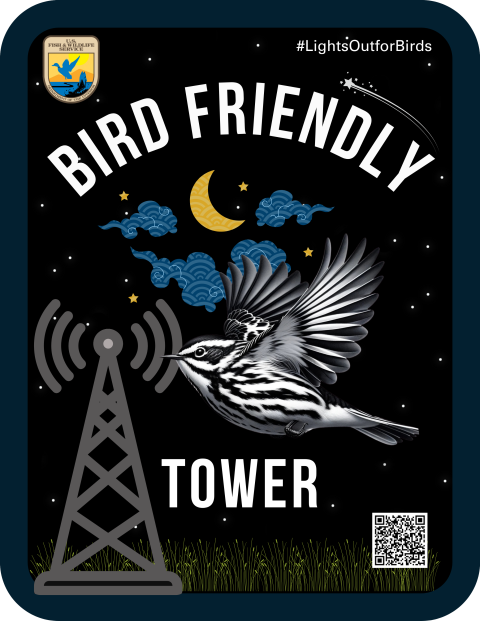About this Collection
Every year 6.8 million birds collide with communication towers in the U.S. and Canada. This happens because birds are attracted to lights on communication towers at night, especially during their peak spring and fall migration seasons when most birds travel by night. When birds become drawn in to artificial lights at night, they can become disoriented and exhausted as they circle the lit structure repeatedly. This attraction to communication tower lights increases the chance birds will collide with either the tower or its guy wires.
Fortunately, there are simple solutions tower owners can take to make a big impact!
Communication Tower Lighting
The Federal Aviation Administration (FAA) and the Federal Communications Commission (FCC) have guidelines that encourage tower operators to replace non-flashing lights with flashing lights. Lighting a tower with only flashing lights at night has been found to reduce bird collisions by as much as 70% while still promoting safety by alerting pilots to tower locations. This lighting modification also reduces energy use and saves tower owners on operating costs. A win-win situation! If there are required lights at the base of the communication tower, using motion sensors can also be effective and reduce costs. However, not all tower owners are aware of how their lighting is impacting birds and would benefit from being informed about the cost-saving options they can take to prevent it.
Join the growing community of people making a difference for birds!
This Songbirdsaver app can help you locate towers in critical habitat areas - near wetlands, grasslands, parks, forests, and beaches. It can also help you find the contact information for tower owners you may want to reach out to. In the documents below, you will find a customizable template letter.
Here are helpful steps on how to change tower lights and an informative video you may want to include in your outreach:
Did you tell others about bird collisions with towers? Be proud of your work!
Spread Awareness and Share your Conservation Actions
Inspire others on social media with #BirdSafeGlass, #BirdFriendly, #BringBirdsBack, #SafeSkies, and #LightsOutforBirds
We can amplify bird conservation efforts by increasing awareness and encouraging action within our communities. Let’s make bird conservation a social norm!

